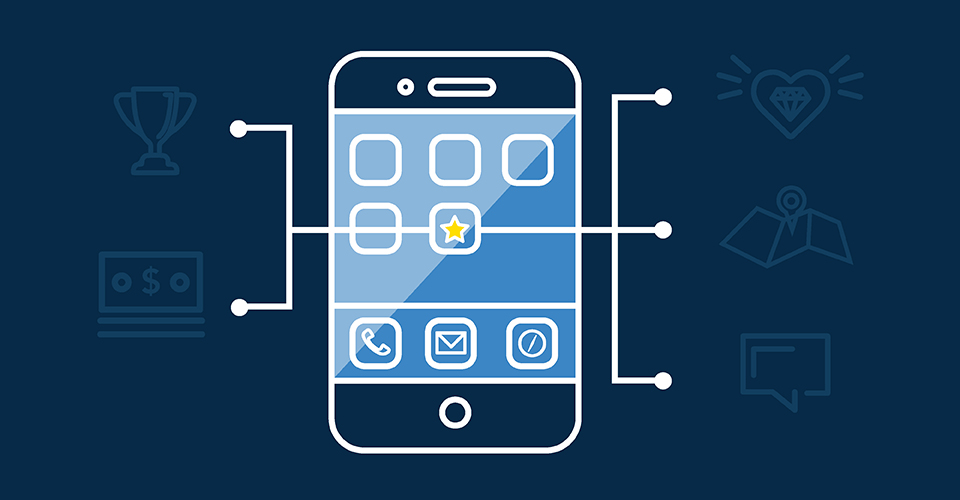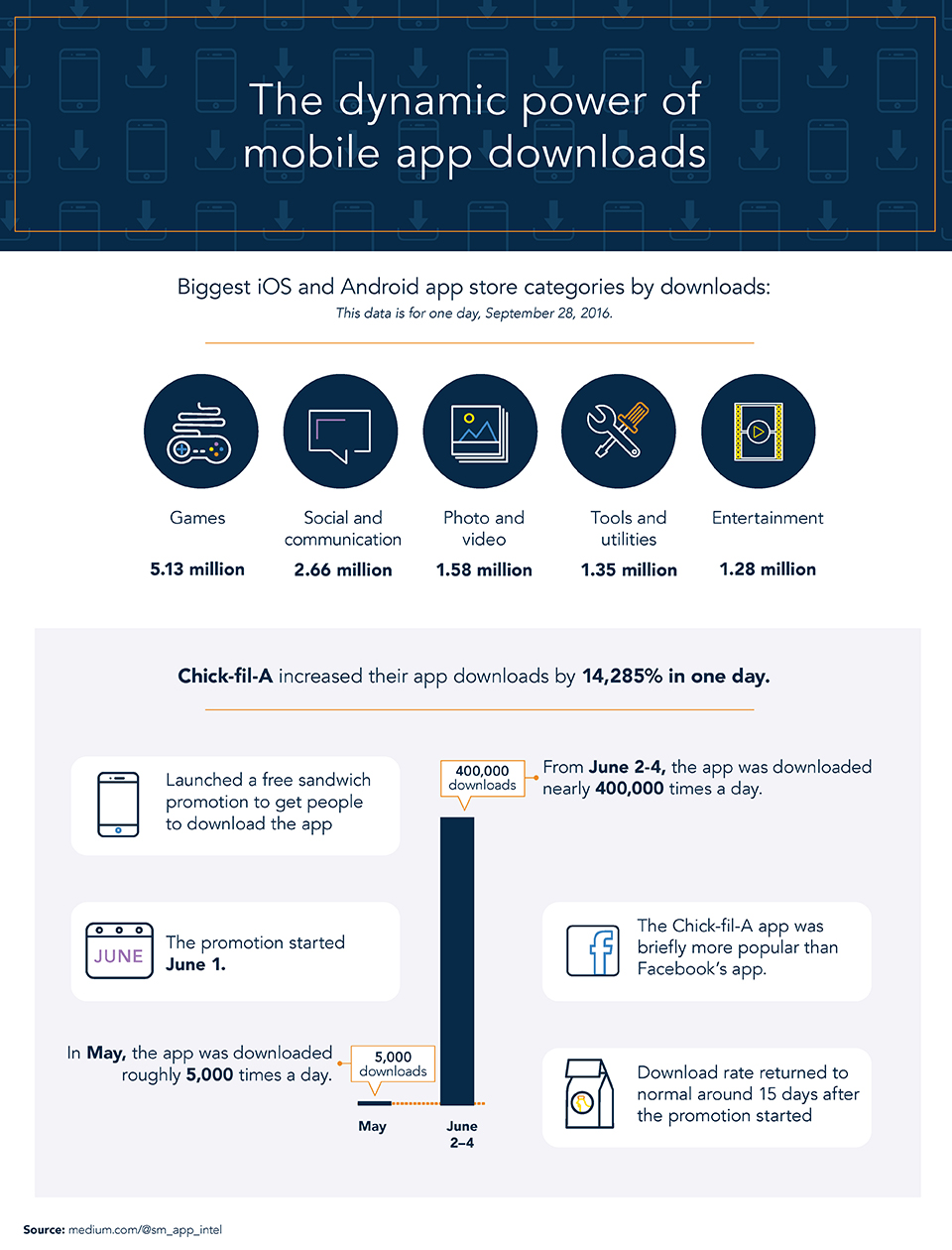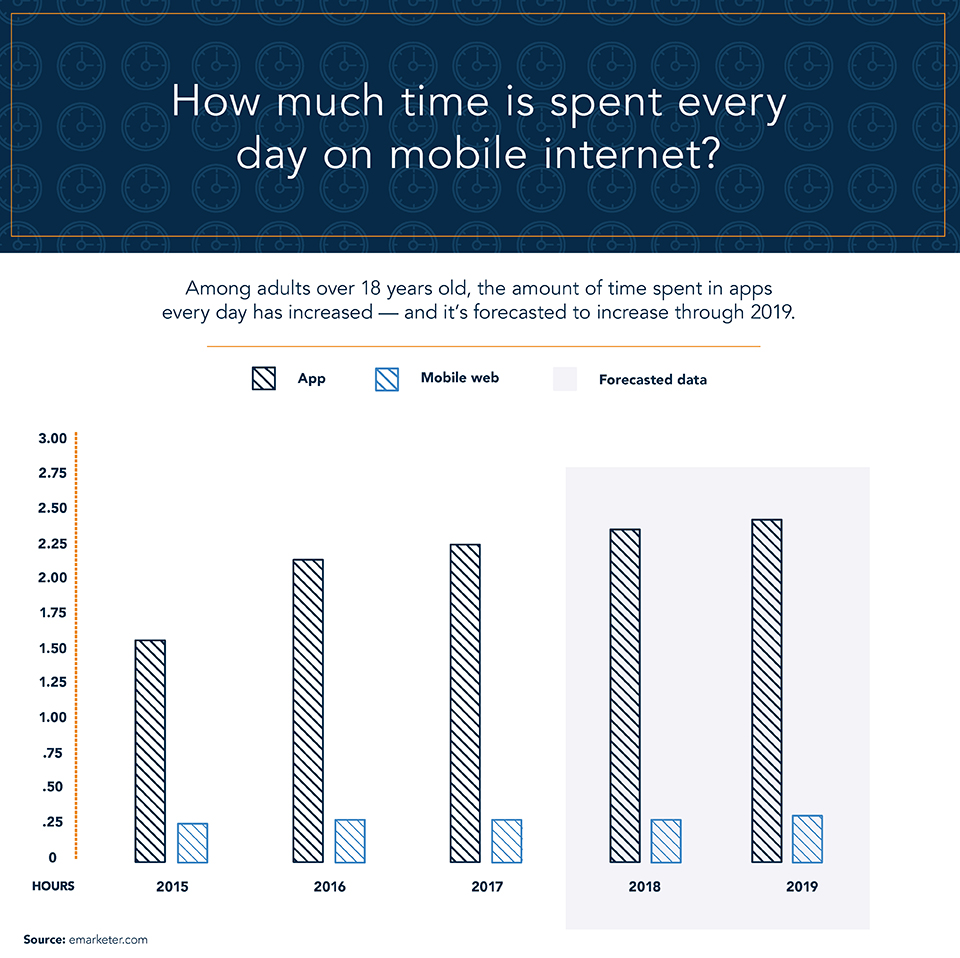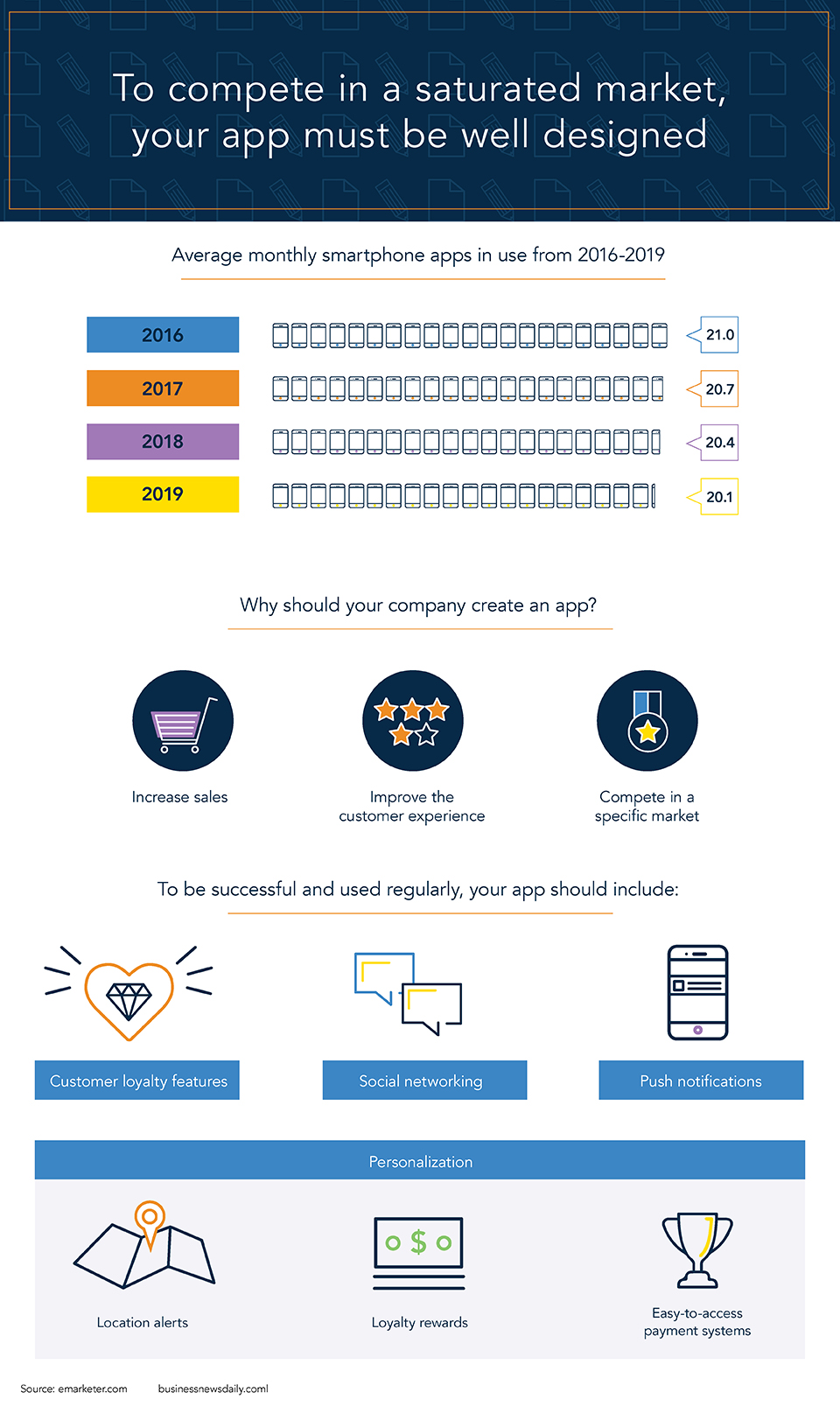



Does your business need an app? Fortunately, app-building platforms make creating a proprietary app for your company easier than ever. Businesses of all sizes can dive into development without getting bogged down in the initial setup or a pricey up-front investment.
Just about anyone can create an app. The result is that Google Play and the Apple App Store are flooded with new apps every day — some are outstanding, but many are subpar. While it’s easier than ever to build your own app, creating a great app still requires strategic planning and careful development. Whether your app will be aimed at customers or employees, the best apps are ones users rely on again and again.
What makes a great app? Here are the key traits shared by the most successful apps.

Before beginning development, industry leaders begin their process with planning, researching, and gathering resources.
The very first step in the process is to have a solid idea. Focus on what’s driving you to create an app in the first place.
Ask yourself what problem your app will solve for users or how it will simplify their lives. Do you plan on monetizing your app once it’s created? If so, which model will you use?
Most importantly, ask yourself how your idea is unique from other apps. One search can produce dozens of apps that do essentially the same thing. The ones that stick around and are successful, however, are the ones that perform their purpose better or differently than the competition.
While developing your idea, researching other apps is imperative. If your idea has already been created, perhaps it’s time to scrap it or take it back to the drawing board. Furthermore, apps aimed at customers and that are created for monetization need to offer something that’s not on the market in order to be successful.
For internal apps, originality isn’t quite as important. Perhaps your company would simply save money by creating a version of an app that’s been eating up part of your budget. In-house apps can still benefit from this research, however; you may want to emulate what works well in these apps, while tailoring other features to suit your unique needs.
Once you hone your idea, create a detailed plan for taking it from concept to product. With the right tools, you can now create an app in just days — but to accomplish this feat, you need to plan ahead. To prepare their apps, professional developers create wireframes, or visual blueprints. These are simple images that show that basic look of your finished product. If you imagine taking a screenshot of key moments in the user experience of your finished app, then turning them into black-and-white sketches, it would look much like your wireframes.
Wireframes are important because they help keep each person on your team informed about the concept and execution. Even if you build this app yourself, work with your developers, designers, copywriters, and any other team members who will be on this project to fine-tune these wireframes so everyone is on board.

Great business leaders know that nothing — not a website, product, service, or app, no matter how revolutionary — will ever make true the saying, “If you build it, they will come.” It doesn’t matter how groundbreaking, streamlined, or flawless your app is: If no one uses it, it will never solve anyone’s problem. Depending on who your ideal users are, successful marketing of your app could take more time and resources than actually creating it.
Whether your app will be for customers or employees, plan on getting the word out early to build anticipation, then doing a big push right before launch.
Getting customer feedback is critical. The more five-star reviews you get right away, the better chance you’ll have of making it to the top of search results in app stores. Android and Apple app stores both return search results based on how highly an app is rated, so quickly share details with your ideal users and ask for reviews.
Instead of focusing on reviews, turn your attention to creating word-of-mouth buzz about your app around the office. Ask managers to use the app when completing tasks and have them request employees do the same. Offer training on the new technology and show them how it makes it easier and quicker to accomplish tasks.
After making these preparations, begin building your app. While every project is unique, the most successful apps tend to share many of the same features.
The best apps are simple and streamlined. A single screen with one or two options for logging in or registering is generally all you need. Lots of options can turn users who want instant access off before they even get to experience your creation.
Similarly, the rest of your app should be easy to navigate and simple to use. Try to eliminate everything except the essence of the product.
What’s your favorite app? Chances are, it’s one that does exactly what you need it to do, and does it really well. Industry leaders have identified the tendency to convolute a product with unnecessary and complicated elements as “feature creep.” The best apps avoid this problem altogether. Apple Maps doesn’t try to keep you up to date on world events, and SmartNews doesn’t try to help you navigate.
Some leaders, such as Facebook, recognized feature creep after releasing a product. This is one reason why we now have one app for Facebook and another for Facebook Messenger.
Simple, focused apps work because users don’t want unnecessary other features cluttering up their experience. Developers who focus on a single purpose can maximize resources to flawlessly deliver that one thing your users need most. If users need more features, developers can add them in later versions. This helps them roll out a great app faster and shows they’re dedicated to continually making improvements.

The single most important feature of any app is how well it works. Constant bugs or crashes will frustrate users and result in negative reviews that could hurt your success even after you roll out patches. It’s critical that product works flawlessly at launch.
How can companies be sure their apps will perform? They test, test, and test again. Feedback and usability testing are part of the planning and development process. Key testing moments include:
There’s nothing more frustrating to a user than waiting on an app to load or having to click through multiple screens before finding what they want. These days, speed isn’t just nice; it’s expected. Keep the app simple and straightforward to help keep things moving. Marisa Mayer suggests that two taps should get the user anywhere they want to go.
The look of an app is almost as important as what it does. Use market research to understand the end user and employ professionally created graphic design elements to nail the visuals. The right design serves three purposes:
While building an app takes dedication, any company can now easily create one with PaaS. Use these guidelines to make an app that will help your customers and employees accomplish more.
Learn about apps and other tools for interacting with customers in our report, “The Fourth Annual State of Marketing Research Report.”
